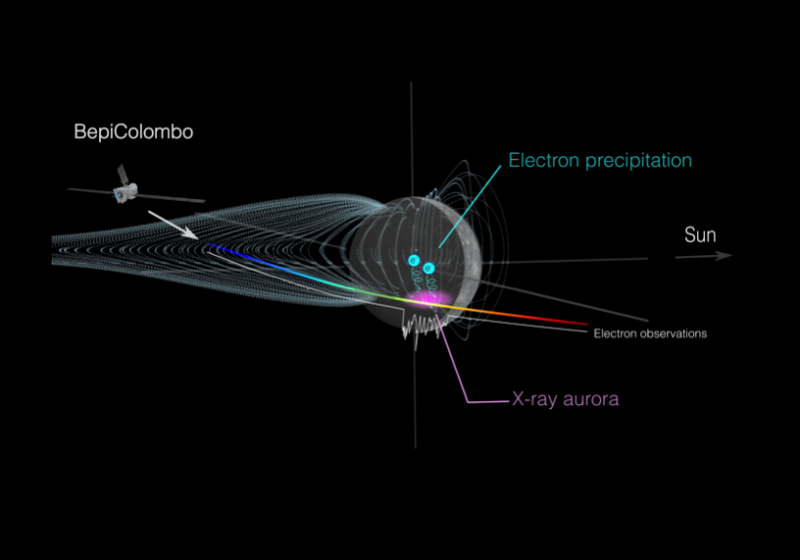Electron storm causes auroral emissions on Mercury’s surface!
The interaction between the solar wind and a planet’s intrinsic magnetic field leads to a variety of responses within the magnetosphere it forms. As with the Earth, but on much faster timescales, Mercury’s magnetosphere is known to involve fundamental processes leading to rapid reconfigurations of the magnetosphere releasing plasma and energy. During the magnetospheric cycle that results from this interaction, charged particles are accelerated, transported, lost or recycled in the magnetosphere. Electrons in particular can precipitate and induce auroral X-ray fluorescence emissions on Mercury’s surface.
The BepiColombo mission, whose third close flyby of Mercury has just taken place in June 2023, is equipped with state-of-the-art plasma instrumentation to study the properties of charged particles in Mercury’s magnetosphere, and in particular, 50 years after the Mariner 10 mission, those of thermal and suprathermal electron populations.
A research team including scientists from IRAP (CNRS-INSU, Université de Toulouse III and CNES), has analyzed data collected during the first Mercury flyby in October 2021 by the Mercury MEA electron analyzers (1) supplied by IRAP (2) , and revealed for the first time multiple, impulsive injections of suprathermal electrons onto closed magnetic field lines that eventually precipitate to Mercury’s surface, in connection with the probable development of magnetic substorm-type activity. These observations underline that electron injections and the resulting energy-dependent magnetic drift are a universal mechanism now documented throughout the Solar System. This mechanism generates different types of aurora now observed on all magnetized planets except Neptune, as well as above the crustal magnetic fields of the Martian crust, despite the differences in structure and dynamics of planetary magnetospheres.

Notes
- Mercury Electron Analyzer
- Institut de Recherche en Astrophysique et planétologie (IRAP – OMP)
Further Resources
- Scientific publication : Aizawa, Harada, André, et al., Direct evidence of substorm-related impulsive injections of electrons at Mercury, Nature Communications, 14, Article number: 4019 (2023)
- Press Releases :
- First BepiColombo Flyby of Mercury Finds Electron Rain Triggers X-Ray Auroras (EuroPlanet)
- Mio witnesses electrons precipitating towards the planet Mercury during the BepiColombo flyby (JAXA)
- Discovery of local chorus waves that unlock the source of Mercury’s electron acceleration and aurora! (JAXA)
- Une pluie d’électrons responsable d’émissions aurorales à la surface de Mercure ! (CNRS-INSU)
IRAP Contact
- Nicolas André, nicolas.andre@irap.omp.eu






